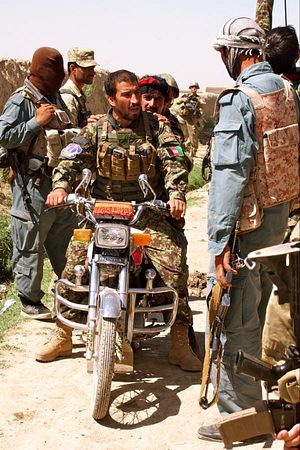Today, the United Nations Assistance Mission in Afghanistan (UNAMA) released its 2014 Annual Report on Protection of Civilians in Armed Conflict, highlighting the increasing death toll among Afghan civilians during last year. According to the report, there has been a 22 percent rise in war-related death and injuries of Afghan civilians in 2014. This is mostly due to an increase in heavy ground engagements between Afghan National Security Forces (ANSF) and insurgents, highlighting the changing nature of combat in the country caused by the gradual withdrawal of NATO and U.S. forces from Afghanistan.
Deaths from ground operations surged 54 percent and were the biggest killers of Afghan women and children in 2014. Also, for the first time since 2009, more civilians were killed from injuries directly sustained during combat than from improvised explosives devices (IEDs). The report notes that both sides have frequently been indiscriminately using mortars, grenades, and rockets in civilian-populated areas with often devastating consequences for local inhabitants. The report attributed 72 per cent of all civilian casualties to Taliban insurgents and 14 per cent to the ANSF and U.S. and NATO forces.
UNAMA documented 10,548 civilian casualties in 2014, the highest number of civilian deaths and injuries recorded in a single year since 2009. Included in the toll were 3,699 civilian deaths (up 25 percent) and 6,849 civilian injuries (up 21 percent) from the previous year. Since 2009, the armed conflict in Afghanistan has caused 47,745 civilian casualties with 17,774 Afghan civilians killed and 29,971 injured.
The UNAMA report’s conclusions are supported by an extensive study conducted by the European Asylum Office (EAO) on the security situation in Afghanistan in 2014. The EAO report also notes – partially based on collaborative research with U.N. institutions – that ground combat in the country is on the rise and that the Taliban are growing stronger: “The insurgents have been increasingly successful in conquering and holding territory, but the ANSF generally still manage to control large city centres and towns in most of the country.”
The EAO paper also notes that there are still significant geographical differences in the security situation. Helmand, Kandahar, and Nangarhar provinces have been the most violent provinces in 2014, whereas Central and Northern Afghanistan is still relatively calm. The increase in the number of large scale ground operation is directly correlated with the diminished capability of U.S. and NATO forces to provide close ground and air support. With the scheduled withdrawal of all Western combat forces from Afghanistan over the next couple of years, this upward trend in both the number of casualties and ground operations will in all likelihood continue.

































